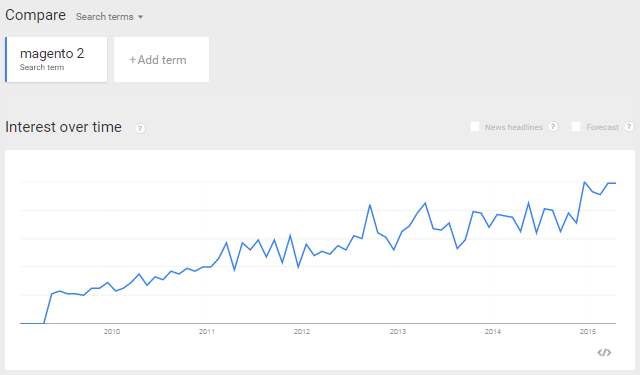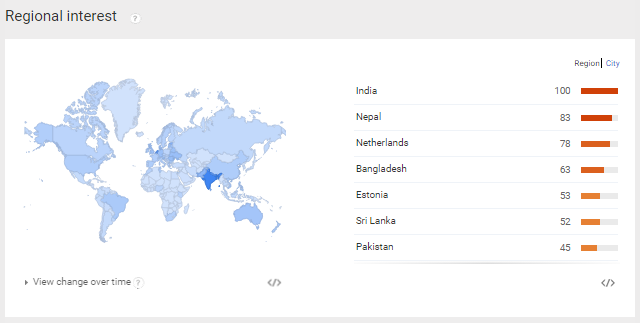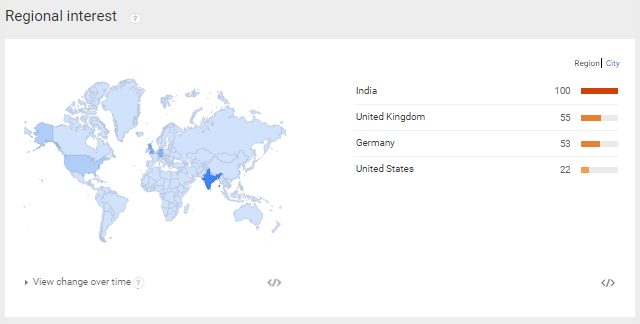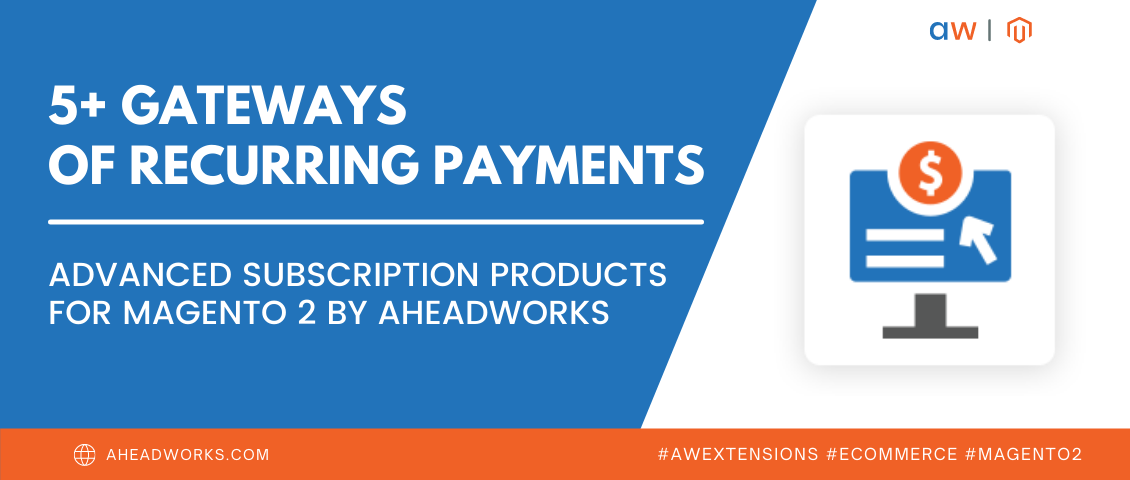
All You Need to Know or Once Again about Magento 2
Categorized as : Ecommerce
Magento 2 is on the fast track now and the company pays much attention to its promotion among developers, which should embrace the new code as quickly as possible and then extend it further throughout the market. The turn of merchants will come a bit later, apparently, closer to the Merchant beta release.

But, no doubt that the whole Community is to get ready to meet Magento 2 fully equipped having a thorough understanding of the new platform. Starting from the very beginning we’ll try to collect some basic facts about Magento 2 and everything around it.
The process of Magento 2 development is transparent for all members of the community and we greatly appreciate it. In line with this principle the Magento 2 team declared the main goals of the current enhancement:
This way we can expect from Magento 2 to be an innovational product able to satisfy the requirements of developers and merchants in a neat and seamless manner.
The popularity of Magento 2 is rising constantly in Google Trends over the time since 2009, as it is shown on the picture below. Lately Magento 2 reached its highest popularity in December 2014, and April 2015.

However, compared to Magento it is still far from the popularity of the most famous ecommerce platform worldwide. Magento 2 gets 100 times less queries.

Magento is very popular in India, Nepal, Bangladesh, Sri Lanka, Pakistan, etc., while Magento 2 is mostly searched from India, United Kingdom, Germany, and United States. Presumably, this interest is coming from the developers and merchants considering to migrate from Magento to Magento 2.


So, we understand that Magento 2 is on the right track, but still needs a lot of things to be done to replace Magento 1.x as the best global ecommerce platform.
 The popularity of Magento 2 is constantly rising, but it is far from the popularity of Magento itself. Magento 2 is currently more popular in developed countries, which indicates that they are better prepared for the migration.
The popularity of Magento 2 is constantly rising, but it is far from the popularity of Magento itself. Magento 2 is currently more popular in developed countries, which indicates that they are better prepared for the migration.
According to Google, the profile of Magento 2 related searches during the last 12 month is the following:
magento 2 demo - 390 searches;
magento 2 release - 140 searches;
magento 2 features - 90 searches;
magento 2 roadmap - 70 searches;
download magento 2 - 70 searches;
magento 2 tutorial - 50 searches;
magento 2 webinar - 40 searches;
magento 2 installation - 10 searches;
magento 2 requirements - 10 searches.
So, following your interests we’ll try to find some valuable online resources relevant to most popular Magento 2 keywords. And, strictly in accordance with the popularity, the next stop is Magento 2 demo.
The wish to touch the new functionality with own hands is inherent for all people and no wonder that "magento 2 demo" is the most popular query. In Google, the keyword results in several provided Magento 2 based demos, but we liked the one from Firebearstudio. It is really nice and good looking and contains necessary explanations of the differences between Magento and Magento 2, which are not immediately clear from the frontend.
Later in this post we’ll explain the main advantages and improvements added to Magento 2.
The second thing most users are interested in about Magento 2 is its release schedule and how it goes.
It was announced at Imagine 2015 that Magento follows the schedule, which is good news for all of us. Let us remind you the milestones.

So, at the end of this year we are waiting for the Merchant General Availability release.
 New Magento 2 is very promising, according to the demo stores placed in the web. Magento 2 is still on the track to release Merchant GA at the end of the year. Great!
New Magento 2 is very promising, according to the demo stores placed in the web. Magento 2 is still on the track to release Merchant GA at the end of the year. Great!
The popularity of other Magento 2 related keywords is much lower, still they cover some interesting aspects.
 The system requirements of Magento 2 are more demanding in comparison with the 1.x Magento versions and ask more additional extensions and supporting technologies.
The system requirements of Magento 2 are more demanding in comparison with the 1.x Magento versions and ask more additional extensions and supporting technologies.
The differences between two Magento platform generations are distinctly reflected in the Magento 2.0 features.
Structure
The structure of Magento 2 differs greatly as, firstly, now everything is putted under the app folder and, secondly, every module has its own directory view. This makes customizations much easier, as developers do not longer need to change the core files of the platform.
CSS Processing
Magento 2 uses the LESS CSS pre-processor, which adds new opportunities for developers and enables easier and faster code changes and maintenance.
Simple Integration with External Systems
Using enhanced APIs Magento 2 simplifies the process of integration with external systems and makes it possible to return the object (order, customer, etc) associated data in one call.
Magento UI Library
Magento UI Library is a set of generic web components and Magento 2 specific patterns, which simplifies the process of Magento theme creation and customization.
Blank Theme
The blank theme without specific customizations allows developers to easily start theme development adding own features and customizations.
Improved Performance and Scalability
Aiming to provide better performance and scalability Magento 2 currently includes:
Reduced upgrade and installation efforts
Magento 2 contains the information regarding versioning policies and compatibility of upgrades with current versions. This allows developers to anticipate upcoming changes and consider them in their customizations.
It also includes a standalone installer, which supports fast and smart installations with preliminary checks of the installation environment.
Magento 2 is also greatly adapted for extension installations and upgrading procedures.
Testing Framework
The testing framework of Magento 2 includes tests for integrations, units, static environments, functional areas, and performance that improves testing and fastens development.
 The new features of Magento 2 are really impressing and give a lot to the extensibility and universality of the platform.
The new features of Magento 2 are really impressing and give a lot to the extensibility and universality of the platform.
You can download Magento on GitHub and also find here a comprehensive description of the installation process.
The main source of all Magento 2 related documents is magento.com, which contains development documentation, changelogs, videos, blogs, etc., and the corresponding page on GitHub.
These are the most popular Google search queries related to Magento 2. Of course, Magento 2 is already much bigger than one blog post and much more multi-facetted, so, in order to better cover this very important for us subject, we are starting a series of articles about Magento 2 and its progress in the conquest of the ecommerce world.
Have any comments? Add them below, please.

But, no doubt that the whole Community is to get ready to meet Magento 2 fully equipped having a thorough understanding of the new platform. Starting from the very beginning we’ll try to collect some basic facts about Magento 2 and everything around it.
Magento 2 Tasks
The process of Magento 2 development is transparent for all members of the community and we greatly appreciate it. In line with this principle the Magento 2 team declared the main goals of the current enhancement:
- Update the technology stack;
- Simplify external integrations;
- Improve performance and scalability;
- Streamline the customization process;
- Enable easier installations and upgrades;
- Deliver better quality, testing resources, and documentation.
This way we can expect from Magento 2 to be an innovational product able to satisfy the requirements of developers and merchants in a neat and seamless manner.
Magento 2 in Google Trends
The popularity of Magento 2 is rising constantly in Google Trends over the time since 2009, as it is shown on the picture below. Lately Magento 2 reached its highest popularity in December 2014, and April 2015.

Magento 2 Google Trend. Source: https://www.google.by/trends/
However, compared to Magento it is still far from the popularity of the most famous ecommerce platform worldwide. Magento 2 gets 100 times less queries.

Magento vs. Magento 2. Source: https://www.google.by/trends/
Magento is very popular in India, Nepal, Bangladesh, Sri Lanka, Pakistan, etc., while Magento 2 is mostly searched from India, United Kingdom, Germany, and United States. Presumably, this interest is coming from the developers and merchants considering to migrate from Magento to Magento 2.

Magento Regional Interest. Source: https://www.google.by/trends/

Magento 2 Regional Interest. Source: https://www.google.by/trends/
So, we understand that Magento 2 is on the right track, but still needs a lot of things to be done to replace Magento 1.x as the best global ecommerce platform.
Magento 2 Most Popular Keywords
According to Google, the profile of Magento 2 related searches during the last 12 month is the following:
magento 2 demo - 390 searches;
magento 2 release - 140 searches;
magento 2 features - 90 searches;
magento 2 roadmap - 70 searches;
download magento 2 - 70 searches;
magento 2 tutorial - 50 searches;
magento 2 webinar - 40 searches;
magento 2 installation - 10 searches;
magento 2 requirements - 10 searches.
So, following your interests we’ll try to find some valuable online resources relevant to most popular Magento 2 keywords. And, strictly in accordance with the popularity, the next stop is Magento 2 demo.
Keyword 1: Magento 2 Demo
The wish to touch the new functionality with own hands is inherent for all people and no wonder that "magento 2 demo" is the most popular query. In Google, the keyword results in several provided Magento 2 based demos, but we liked the one from Firebearstudio. It is really nice and good looking and contains necessary explanations of the differences between Magento and Magento 2, which are not immediately clear from the frontend.
Later in this post we’ll explain the main advantages and improvements added to Magento 2.
Keyword 2: Magento 2 Release (Magento 2 Roadmap)
The second thing most users are interested in about Magento 2 is its release schedule and how it goes.
It was announced at Imagine 2015 that Magento follows the schedule, which is good news for all of us. Let us remind you the milestones.

Magento 2 Schedule. Source: Magento.com
So, at the end of this year we are waiting for the Merchant General Availability release.
The popularity of other Magento 2 related keywords is much lower, still they cover some interesting aspects.
Keyword 3: Magento 2 Requirements
- Operating systems: Linux distributions such as RedHat Enterprise Linux (RHEL), CentOS, Ubuntu, Debian, and so on
- Composer (latest stable version)
- Apache 2.2 or later
- PHP 5.5.x or 5.6.x
- Required PHP extensions:
- PDO/MySQL
- mbstring
- mcrypt
- mhash
- simplexml
- curl
- gd2, ImageMagick 6.3.7 (or later) or both
- soap
- intl
- MySQL 5.6.x
- Mail Transfer Agent (MTA) or an SMTP server
- Optional but recommended:
- 2.0 or later (development environments only; can have an adverse effect on performance)
- PHPUnit (as a command-line tool) 4.1 or later
Keyword 4: Magento 2 Features
The differences between two Magento platform generations are distinctly reflected in the Magento 2.0 features.
Structure
The structure of Magento 2 differs greatly as, firstly, now everything is putted under the app folder and, secondly, every module has its own directory view. This makes customizations much easier, as developers do not longer need to change the core files of the platform.
CSS Processing
Magento 2 uses the LESS CSS pre-processor, which adds new opportunities for developers and enables easier and faster code changes and maintenance.
Simple Integration with External Systems
Using enhanced APIs Magento 2 simplifies the process of integration with external systems and makes it possible to return the object (order, customer, etc) associated data in one call.
Magento UI Library
Magento UI Library is a set of generic web components and Magento 2 specific patterns, which simplifies the process of Magento theme creation and customization.
Blank Theme
The blank theme without specific customizations allows developers to easily start theme development adding own features and customizations.
Improved Performance and Scalability
Aiming to provide better performance and scalability Magento 2 currently includes:
- Improved indexers – new indexers with the faster query performance;
- Magento performance toolkit – set of performance test scripts;
- Varnish – out-of-the-box integration with Varnish cache;
- Full page caching – cached content of static pages;
- Multiple admin users.
Reduced upgrade and installation efforts
Magento 2 contains the information regarding versioning policies and compatibility of upgrades with current versions. This allows developers to anticipate upcoming changes and consider them in their customizations.
It also includes a standalone installer, which supports fast and smart installations with preliminary checks of the installation environment.
Magento 2 is also greatly adapted for extension installations and upgrading procedures.
Testing Framework
The testing framework of Magento 2 includes tests for integrations, units, static environments, functional areas, and performance that improves testing and fastens development.
Keyword 5: Download Magento 2 (Magento 2 installation)
You can download Magento on GitHub and also find here a comprehensive description of the installation process.
Keyword 6: Magento 2 Tutorial
The main source of all Magento 2 related documents is magento.com, which contains development documentation, changelogs, videos, blogs, etc., and the corresponding page on GitHub.
Conclusion
These are the most popular Google search queries related to Magento 2. Of course, Magento 2 is already much bigger than one blog post and much more multi-facetted, so, in order to better cover this very important for us subject, we are starting a series of articles about Magento 2 and its progress in the conquest of the ecommerce world.
Have any comments? Add them below, please.











